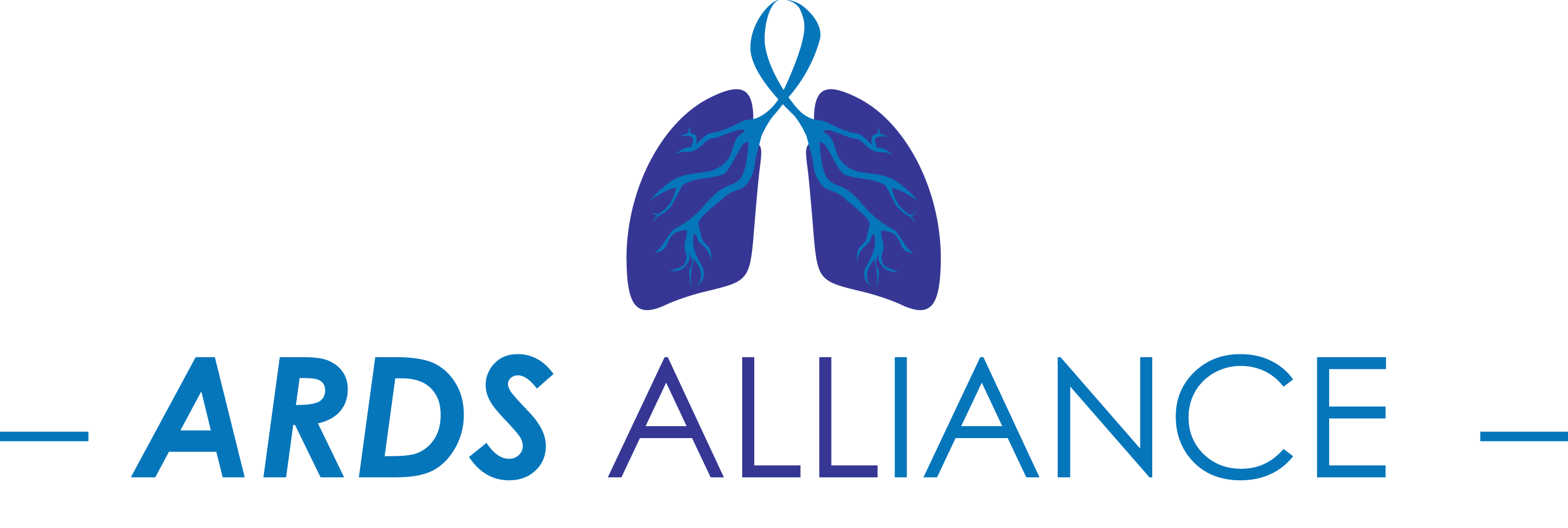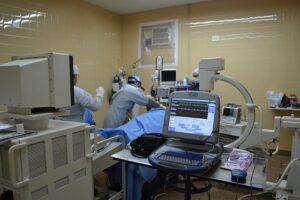Understanding the Role of Respiratory Therapists in ARDS Care
Understanding the Role of Respiratory Therapists in ARDS Care
Acute Respiratory Distress Syndrome (ARDS) is a critical condition that affects numerous individuals each year, often leaving families bewildered and searching for clarity regarding its implications and treatments. A central component in the management of ARDS is the role of respiratory therapists (RTs). These healthcare professionals specialize in managing patients with breathing difficulties, and their expertise is essential for optimizing care for those suffering from ARDS. In this article, we will explore the vital functions performed by respiratory therapists, the treatment modalities they employ, and their contributions towards improving patient outcomes in ARDS care.
Understanding ARDS itself is integral. ARDS is characterized by acute onset of inflammatory lung injury resulting in impaired gas exchange and can stem from a variety of causes, including pneumonia, sepsis, trauma, and aspiration of gastric contents. Recognizing its implications can be daunting for both patients and their families, and this is where respiratory therapists play a pivotal role as educators, caregivers, and advocates.
What is Acute Respiratory Distress Syndrome (ARDS)?
ARDS is a life-threatening condition marked by severe inflammation of the lungs and increased permeability of the alveolar-capillary membrane. This leads to pulmonary edema and, ultimately, hypoxemia due to impaired gas exchange. It is crucial to understand that ARDS can occur in various stages, classified as mild, moderate, or severe based on the degree of hypoxemia.
The clinical presentation of ARDS typically includes:
- Rapid onset of shortness of breath
- Signs of hypoxemia, such as cyanosis (bluish discoloration of skin and lips)
- Increased respiratory rate and effort
- Chest X-ray findings of bilateral infiltrates
Understanding the pathophysiological mechanisms behind ARDS is essential as it helps respiratory therapists tailor their interventions. The interventions that revolve around enhancing oxygenation and ventilation are critical for improving outcomes and reducing morbidity and mortality rates associated with this syndrome.
The Role of Respiratory Therapists in ARDS Management
Respiratory therapists are highly trained healthcare professionals who provide consultations, develop care plans, and administer specific therapies to patients experiencing respiratory challenges. Their responsibilities encompass a wide array of functions, from performing diagnostic tests to utilizing advanced therapeutic modalities tailored to ARDS management. The following outlines the core responsibilities of respiratory therapists in ARDS care:
1. Assessment and Monitoring
One of the primary responsibilities of respiratory therapists is conducting thorough assessments of patients presenting with ARDS. This involves evaluating vital signs, lung function, and blood gases, ensuring that healthcare teams have accurate data to guide treatment decisions.
Furthermore, RTs continuously monitor patients throughout their treatment journey. They assess improvement or deterioration in respiratory status and are vital in detecting early signs of complications.
- Conducting arterial blood gas (ABG) analysis to monitor oxygenation and carbon dioxide levels
- Performing pulmonary function tests
- Regularly observing and documenting changes in respiratory mechanics
- Involving in interdisciplinary rounds to discuss care plans and progress with the healthcare team
2. Intervention and Therapy
Respiratory therapists play a key role in delivering therapies that are crucial in treating ARDS. Some of the treatment modalities they may employ include:
- Mechanical Ventilation: Given that many ARDS patients experience significant respiratory failure, mechanical ventilation is frequently necessary. Respiratory therapists are skilled in initiating, adjusting, and managing ventilators to meet the unique needs of each patient, tailoring settings based on clinical parameters.
- Oxygen Therapy: Administering supplemental oxygen is fundamental for improving oxygen delivery. RTs evaluate the appropriate delivery methods, whether through nasal cannula, face mask, or high-flow nasal oxygen systems.
- Positive End-Expiratory Pressure (PEEP): The application of PEEP helps to recruit collapsed alveoli, enhancing lung compliance and oxygenation. RTs carefully titrate PEEP settings based on individual patient responses.
- Prone Positioning: In severe ARDS cases, respiratory therapists may assist in repositioning patients into the prone position, which can improve ventilation-perfusion matching and enhance oxygenation.
- Extrapulmonary Support: In certain scenarios, therapists may also implement non-invasive ventilation (NIV) or continuous positive airway pressure (CPAP) as therapeutic options.
3. Education and Support
Another critical aspect of a respiratory therapist’s role is patient and family education. Given ARDS’s complex nature, families may have many questions and concerns about the diagnosis, treatment options, and prognoses. RTs work closely with families to explain treatment processes and address their concerns in a manner that is both informative and supportive.
They may cover topics such as:
- The purpose and functioning of mechanical ventilation
- What to expect during the hospitalization process
- Long-term outcomes and potential rehabilitation options following discharge
- Strategies for coping with the emotional and psychological impacts of ARDS
In addition to education, respiratory therapists advocate for patient care preferences, ensuring that the decisions made align with both the best medical practices and the individual patient’s goals.
Collaborative Care Team
The management of ARDS requires a collaborative approach that includes a diverse team of healthcare professionals. In this interdisciplinary setting, respiratory therapists are crucial for bridging the gap between various specialties, ensuring that patients receive well-rounded care.
They work in unison with:
- Intensivists: Who lead the management strategies in Intensive Care Units (ICUs)
- Nurses: Who provide bedside care and report changes in patient conditions to the healthcare team
- Physiotherapists: Who assist in the rehabilitation phase to improve functional outcomes
- Dietitians: Who ensure that nutritional needs are met, crucial for healing and recovery
This collaborative practice maximizes the efficacy of interventions and enhances overall patient outcomes, emphasizing the importance of respiratory therapists within this team dynamic.
Challenges and Advances in ARDS Care
Despite significant advancements in the field, managing ARDS remains a daunting challenge. Respiratory therapists often face numerous hurdles, including rapidly changing patient statuses, the need for advanced technology, and limited resources. Keeping abreast of new guidelines, treatments, and research in ARDS is imperative for ensuring optimal patient care.
Recent advances in the field include:
- Enhanced understanding of lung-protective ventilation strategies, which minimize ventilator-induced lung injury (VILI).
- Research on the effects of extracorporeal membrane oxygenation (ECMO) for severe ARDS patients, providing an option for patients not responsive to conventional therapies.
- Emphasis on early identification and management of ARDS, which may improve outcomes.
By staying informed and adept in these evolving areas, respiratory therapists serve as advocates for their patients, ensuring they receive the most advanced and effective care available.
Frequently Asked Questions (FAQs)
As a caregiver or family member of someone experiencing ARDS, you may have several questions about the role of respiratory therapists and the condition itself. Here are some common queries:
- What qualifications do respiratory therapists have?
Respiratory therapists typically hold an associate’s degree or bachelor’s degree in respiratory therapy, in addition to national certification and state licensure. - How do respiratory therapists determine the best treatment course for ARDS?
RTs utilize clinical assessments, diagnostic results, and established protocols to develop personalized care plans based on each patient’s unique characteristics and responses to treatments. - What emotional support do respiratory therapists provide?
In addition to clinical care, RTs often provide emotional support to both patients and families, navigating the complexities of an ARDS diagnosis and recovery. - Are there resources available for families impacted by ARDS?
Yes, support groups and online resources offer education and community for those affected by ARDS. Websites like the ARDS Foundation provide valuable information and support.
Conclusion
Understanding the role of respiratory therapists in the care of ARDS patients not only highlights the importance of their expertise but also validates their critical place within the healthcare team. With their extensive knowledge and training, RTs provide essential assessments, therapeutic interventions, and educational support to patients and families experiencing the overwhelming challenges of ARDS. As awareness about this condition grows and treatment methodologies continue to evolve, respiratory therapists remain at the forefront, working tirelessly to promote optimal recovery and quality of life for their patients. By strengthening communication, advocacy, and collaboration, respiratory therapists play a pivotal role in the journey from the ICU to recovery for those affected by ARDS.
For further reading, consider following these links:
About ARDS and Post-ARDS
ARDS (Acute Respiratory Distress Syndrome) is a life-threatening condition typically treated in an Intensive Care Unit (ICU). While ARDS itself is addressed during the ICU stay, recovery doesn’t end with discharge; patients then embark on a journey of healing from the effects of having had ARDS.
Disclaimer
The information provided in ARDS Alliance articles is for general informational and educational purposes only and is not a substitute for professional medical advice, diagnosis, or treatment. While we strive to present accurate, current information, the field of Acute Respiratory Distress Syndrome (ARDS) and related healthcare practices evolve rapidly, and ARDS Alliance makes no guarantee regarding the completeness, reliability, or suitability of the content.
Always seek the advice of qualified healthcare professionals with any questions you may have regarding a medical condition. Never disregard professional medical advice or delay seeking it because of information you read in ARDS Alliance articles. ARDS Alliance, its authors, contributors, and partners are not liable for any decision made or action taken based on the information provided in these articles.
About ARDS Alliance
Our mission is to improve the quality of life for ALL those affected by ARDS.
The ARDS Alliance is a non-profit committed to raising awareness and enhancing the understanding of Acute Respiratory Distress Syndrome (ARDS), a severe lung condition often occurring in critically ill patients. Through developing alliances, it unites various organizations and experts striving to improve care and support research aimed at finding more effective treatments. Their efforts include educating the public and healthcare providers about ARDS symptoms, risk factors, and advancements in treatment, ensuring better patient outcomes and resource availability.

“As the President of ARDS Alliance, I am dedicated to improving the lives of patients suffering from acute respiratory distress syndrome. Through our advocacy efforts and partnerships with medical professionals, we strive to raise awareness and support research for better treatment options. Together, we can make a difference in the fight against ARDS.”
~ Paula Blonski
President, ARDS Alliance





